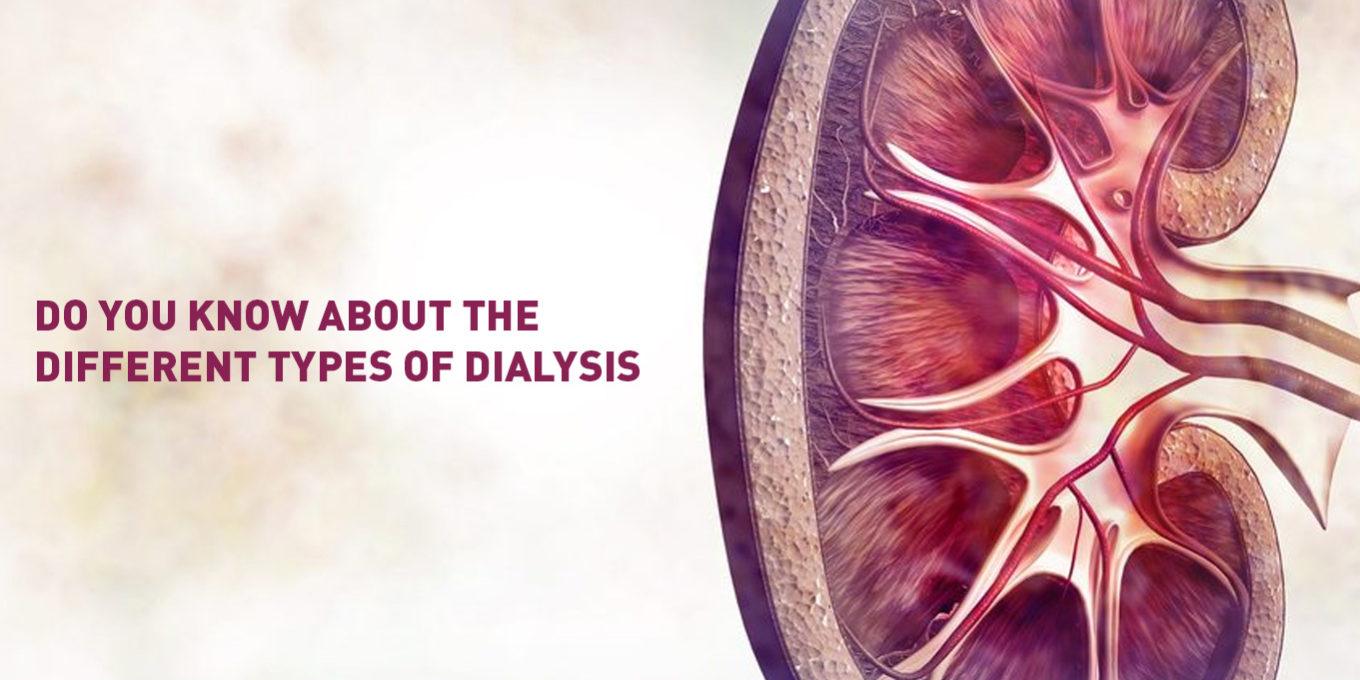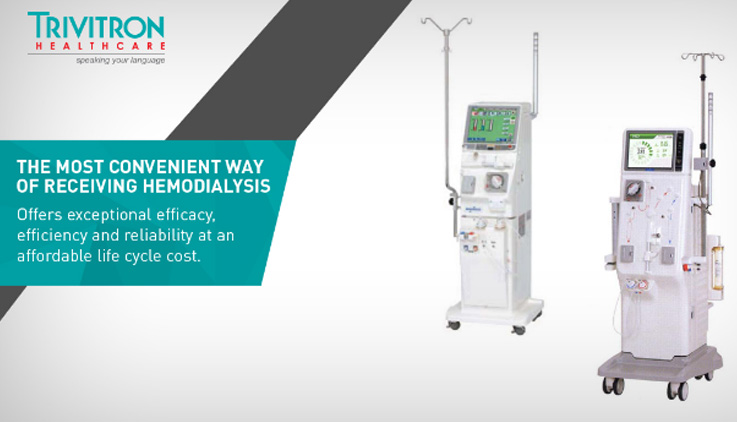What is Dialysis?
Dialysis is a process that artificially performs the functions of a healthy pair of kidneys as their replacement. Before dialysis became a reality, the result of a kidney failure meant death. But since its inception in the 1940s, the treatment has given hope to millions by paving a way for patients to live without sacrificing productivity. According to National Kidney Foundation, 10% of the population worldwide is affected by chronic kidney disease (CKD) and over 2 million people worldwide currently receive treatment with dialysis or kidney transplant to stay alive.
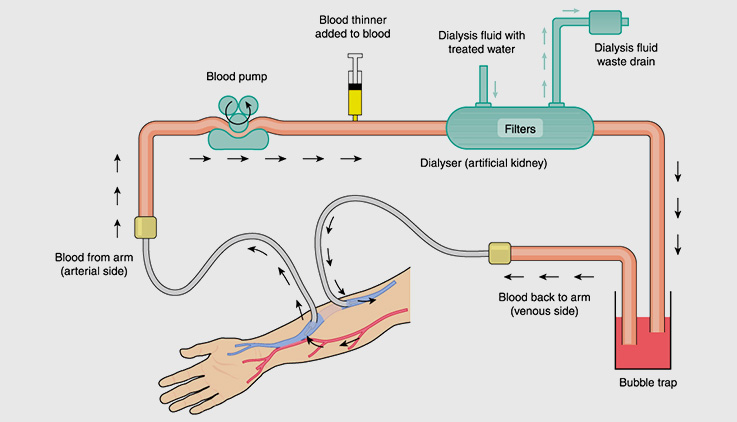
Who is Dialysis for?
Dialysis is for patients who suffer from damaged, injured or impaired kidneys. A patient who suffers from chronic kidney disease or renal failure in its late stages is likely to be put on a dialysis treatment. Kidney failure, however, is not always permanent. In that case, dialysis may be used as a treatment for a limited period of time until the kidneys are able to naturally function optimally.
Often, Dialysis is used temporarily in the case of:
- A drug overdose or consumption of toxic substances
- A chronic heart disease
- A traumatic injury to the kidney
How Dialysis helps
Dialysis maintains balance in the human body. It carries out the kidney’s native functions such as:
- Cleaning the blood
- Removing waste, salt and extra water to prevent build up
- Safe regulation of chemicals like potassium, sodium and bicarbonate in the blood
- Controlling blood pressure
Types of Dialysis
There are two main types of dialysis:
- Hemodialysis
- Peritoneal dialysis
The primary difference between the two is that Hemodialysis works through filtering while peritoneal dialysis works through diffusion.
Hemodialysis
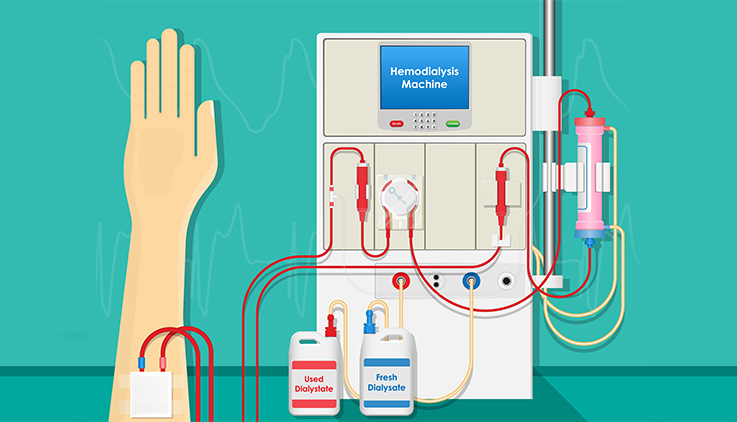
Hemodialysis is a more commonly opted treatment in which an artificial kidney (hemodialyzer) carries out the task of removing the excess waste and chemicals from the blood. For this method, the patient requires a minor surgery for the enlargement of the blood vessel, usually in the arm, to make the insertion of catheters possible.
The doctors may even opt for fistula— an access made by joining an artery to a vein, thus creating a bigger blood vessel, or grafting— using a plastic tube to join an artery and a vein, in case the patient’s blood vessels are not suitable for fistula.
The typical duration of a Hemodialysis treatment is 3-5 hours, 3 times a week. This could differ depending on the patient’s personal condition and requirements.
The treatment is mostly done at a dialysis center, hospital, or the doctor’s office. Home Hemodialysis is recommended for patients who are in need of a long-term treatment.
When Home Hemodialysis is feasible:
- The patient has had an extended exposure to the treatment
- The patient has maintained physical stability during treatment
- The patient has a home suitable for the dialysis equipment
- The patient does not suffer from illnesses that may compromise the treatment
- The patient has a caregiver who can help out with the treatment
Peritoneal Dialysis
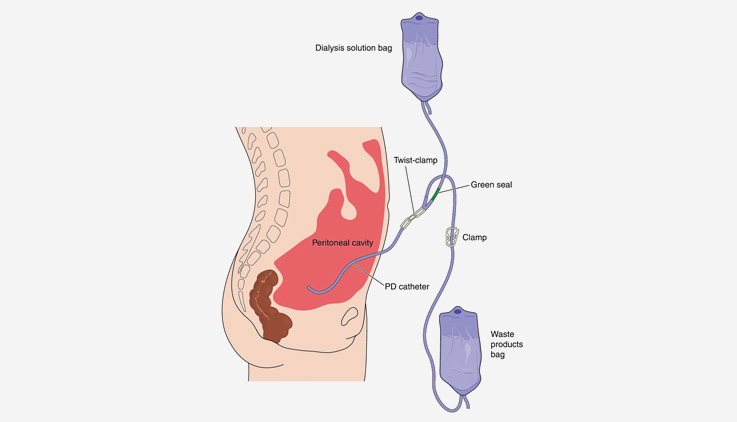
In peritoneal dialysis, the catheter which is a plastic tube is surgically placed in the abdomen and it functions as an access. For the treatment, the peritoneal cavity (abdomen area) is filled with dialysate through the catheter. This solution gradually draws out the waste and toxins from the bloodstream that line the peritoneal cavity. And in this way, the peritoneal dialysis uses the natural filtering ability of the peritoneum.
Although peritoneal dialysis takes a longer period to produce the same results as the Hemodialysis, it offers more independence as it can be carried out at home or while travelling with minimum equipment.
There are numerous types of peritoneal dialysis but the main types are:
- Continuous ambulatory peritoneal dialysis (CAPD)
- Continuous cyclic peritoneal dialysis (CCPD)
The basic treatment is commonly shared between the two types. The differences are in the number of treatments required and the way they are carried out.
Continuous ambulatory peritoneal dialysis (CAPD) is the only type of dialysis done without the use of a machine. In this type of treatment, the patient or caregiver fills and drains the dialysate solution multiple times in the day through the catheter. This is called an exchange and is done 3-5 times a day, with each exchange taking 45 minutes. During this time the patient can go about doing their daily activities care-free.
Continuous cyclic peritoneal dialysis (CCPD) makes use of a machine to cycle the fluids in and out of the patient’s abdomen. The treatment is generally carried out every night while the patient sleeps with 10-12 hour duration. It is ideal for infants, children and the elderly due to its convenience and comfort.
Both the main types of dialysis have their pros and cons. A treatment that suits one patient may not work for another. To find out the type of treatment that best suits your condition, needs, and requirements, it’s crucial to discuss with your doctor and figure out a viable solution.
Trivitron has been credited with the installation of some of the finest, simplest and most efficient dialysis machines in the market.

